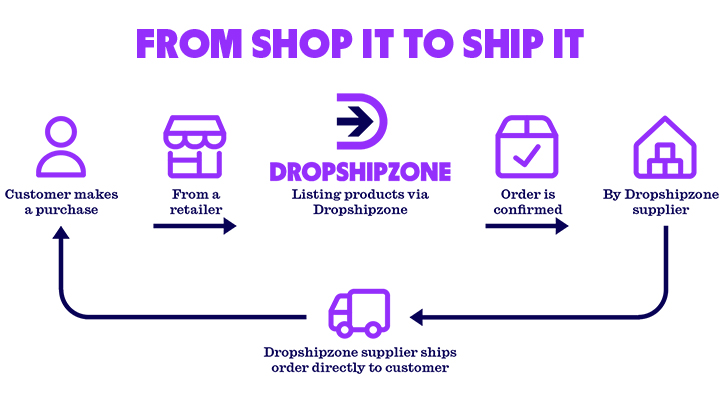Everyone is dropshipping and no one is talking about it.
But everyone is talking about brand delivered, brand fulfilled, e-concessions and digital concessions.
E-commerce is undergoing a structural change. During Covid, retailers and brands placed more inventory online. Now, we’re moving further up the supply chain, with manufacturers and suppliers doing the same, shunning wholesale distribution in favour of a different model.
Brand fulfilment and digital concessions are on the rise, which is more or less a form of dropshipping, except the goods are shipped directly from the supplier in branded packaging. Meanwhile, with traditional dropshipping, the goods will ship blind, without any marketing material that reveals the identity of the supplier.
Digital concessions have become a popular model for fashion marketplaces in particular since Covid. The model gives suppliers more control over pricing and promotion.
What’s even more exciting is that smaller lesser-known suppliers can generate significantly more sales on marketplaces than on their own websites. It’s a model that lends itself particularly well to smaller or scaling brands that need exposure.
Why fashion loves dropshipping
This is the digital version of department stores that decades ago moved to concessions taking a percentage of sales. Think of the high-end concessions seen in department stores like Myer and David Jones, except this is online. The brand keeps most of the sale, while the retailer takes a small commission.
A physical concession requires the brand or supplier of goods to generate demand, to some degree. It’s also quite costly. The good news is, with a digital concession, or dropshipping, there’s no need to invest further.
Many brands and suppliers don’t want to spend extra time, money and effort running a full-scale physical concession. This is why dropship marketplaces are becoming more attractive. There’s no need to invest in extra staff, marketing or promotions.
For suppliers, selling on a dropship marketplace is an easy way to add an extra sales channel.
You have full control over your product images, description and pricing.
It also provides more flexibility to swap and change products to keep up with market trends.
But the best part is, suppliers can earn higher profit margins this way. Suppliers get a commission percentage off every product sold by the brand. Suppliers can earn more with a concession or marketplace model as opposed to wholesale.
And, of course, for the marketplace, it reduces the risk of carrying inventory that might not sell.
Meet the fashion dropshippers
Global fast fashion retailer Asos offers a Partner Fulfils program. Essentially a form of dropshipping, this has helped Asos expand its range without the hassle of inventory management. It allows for greater stock availability without impacting the supply chain.
Dropshipping is also helping Foot Locker to put its best foot forward. Traditionally, all sneakers would be delivered via Foot Locker’s own distribution centres. That’s changed with ‘brand fulfilment’ where certain brands will dropship on Foot Locker’s behalf.
In the UK, Marks & Spencer, a 150-year-old retailer, started out with third-party brands a few years back before moving to a dropship model in 2022. If a 150-year-old retailer can recognise the opportunity, that’s saying something.
Even some of the biggest names in fashion on the ASX dropship their inventory. Local player Cettire is a great example, selling products from more than 1000 designer and high-end brands on its platform on a dropship basis.
Want to sell through more channels? Sell more, more often and become a Supplier with Dropshipzone.







